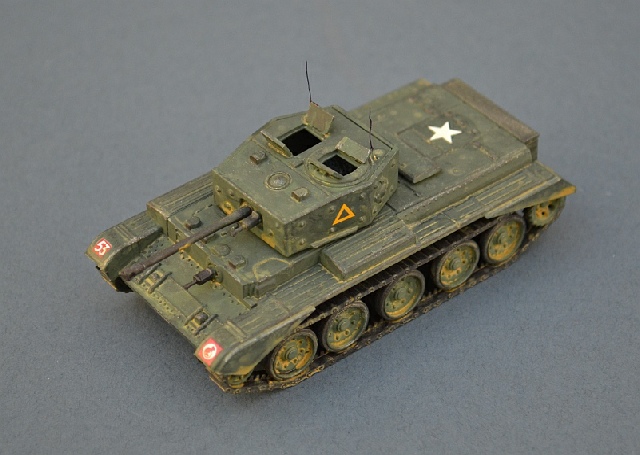The Dark Side -
![]()
Vickers Mk VIb Light Tank, 1st Lothians & Borders Yeomanry, BEF, France 1940
JB 1/76.
The Vickers Tank was widely deployed with the British Expeditionary Force in France in 1940. Designed as a fast cavalry support vehicle for the mechanised infantry, it was no match for Rommel's Panzers, but still put up a good fight.
For more information on the BEF's use of Vickers Tanks and Scout Carriers, try this link

Vickers/Carden Loyd Scout Carrier, 1st Lothians & Borders Yeomanry, BEF, France 1940
Airfix 1/76. Modified from their Bren Gun/Universal Carrier.
The Scout Carrier was an early variant of the Bren Gun or Universal Carrier that
was used by British and Commonwealth forces throughout WW2. It provided infantry
with fast and reliable all-
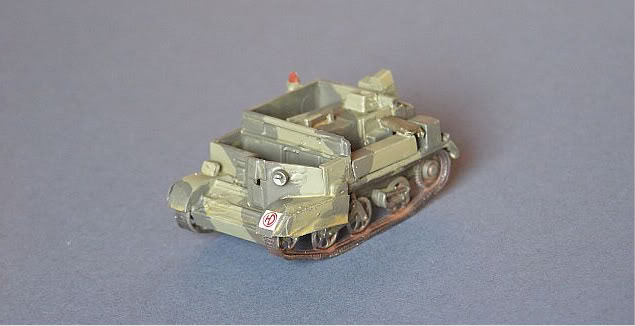
Matilda II Infantry Tank, 7th Royal Tank Regiment, Operation Compass, Western Desert, December 1940
Airfix, 1/76(?), with own decals
The Infantry Tank Mk.II Matilda was one of the most significant tanks used during
the early part of WW2. British tank doctrine split the tank force into two distinct
groups: "Infantry Tanks" that were heavily armoured and moved slowly in support of
the advancing Infantry, and "Cruiser Tanks" that were fast and mobile. The Matilda
fell into the former category -
North Africa was a different matter; against the Italian Army and Rommel's Afrika
Korps, the Matilda saw greater success, although its twin bus engine propulsion,
complex suspension and unreliable steering were ill-
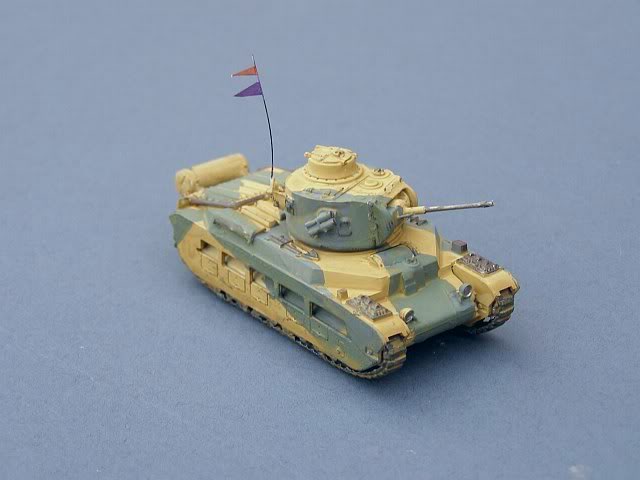
Valentine III Infantry Tank, 2nd Lothians & Borders Horse, 1941
Italeri (ex-
The Infantry Tank MkIII Valentine entered service in June 1940, just in time for
the British Army's desperate re-
Like most British tanks, it was slower and more lightly armed than its German adversaries,
but Valentines fought well in the North African Campaigns and saw extensive service
with the Red Army during the battle for Moscow. Valentines were also converted into
a variety of specialist tanks, including flame throwers, bridge layers, flail tanks,
anti-
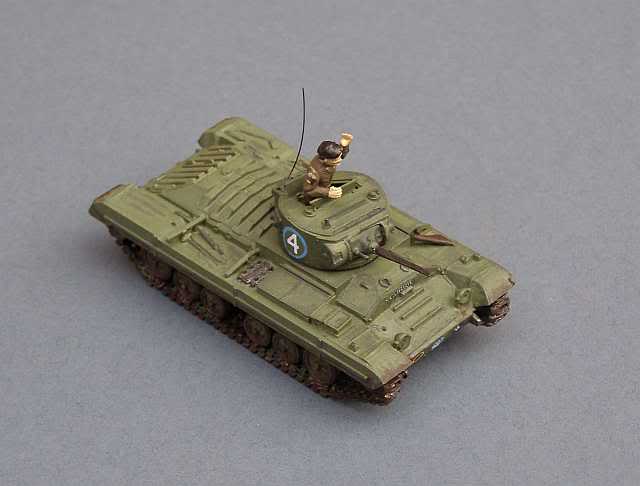
Crusader III Cruiser Tank Mk.IV, 2nd Lothians & Borders Horse, 1943
Hasegawa 1/72, with own decals
The A15 Cruiser Tank Mk.IV Crusader first entered service in 1941 and played a key role in the North African campaigns. A fast but lightly armoured (and armed) cruiser tank, by 1943 it had been outgunned by the German Panzer IV and Tiger tanks in Tunisia, despite being modified to carry the more powerful British 6lb gun. Never the most reliable of tanks, it suffered from cooling and track problems throughout its career, as well as a tendency for its own gun blast to damage the fuel system if firing with the turret traversed to the rear.
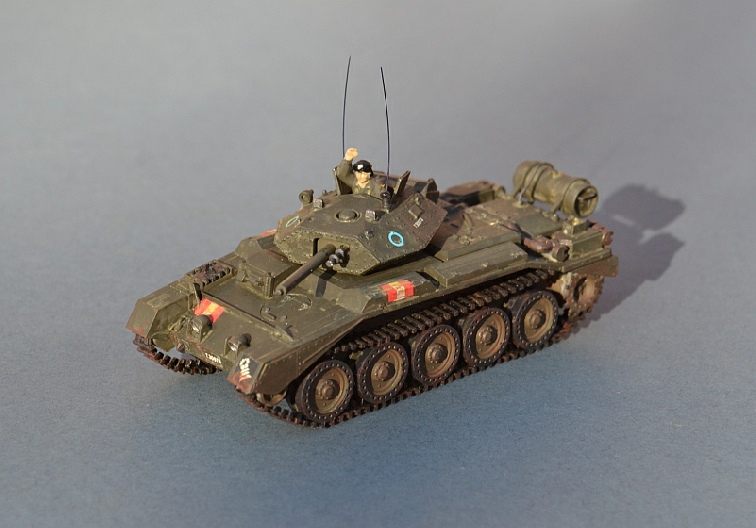
Humber Mk II Armoured Car, 1942
Hasegawa 1/76 -
Humber's Mk II armoured car entered UK service in the desert in 1941, and remained until about 1945. Later variants with 37mm guns remained in service with other countries into the 1950s. Canadian built variants were known as the Fox Armoured Car.
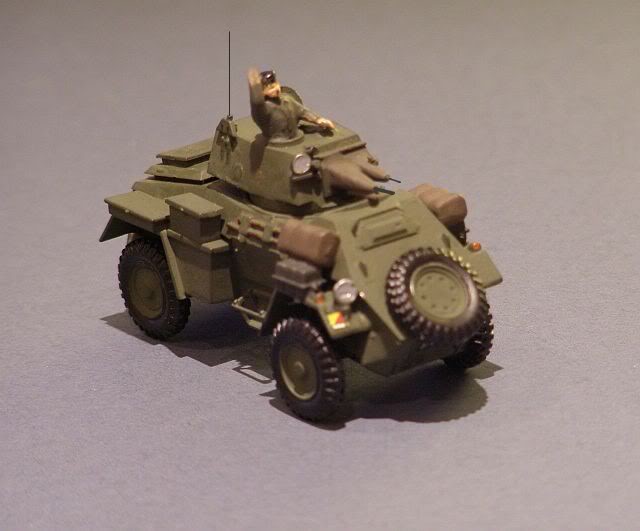
M3 Grant Command Tank -
Hasegawa 1/72 with Bison Decals
At the start of WW2 the US Army had astonishingly few tanks, and it was quickly clear
that they would be no match for German armour. Building on British experience, the
M3 General Lee tank was quickly produced as an interim design, using the running
gear of the M2, but adding a powerful new 75mm gun in a rather old-
The resultant high silhouette of the M3 and its limited firing arcs were not ideal,
but the running gear was relativelty reliable and the larger gun could match the
armour plating of any other tank in existence at the time. Drawing on the bitter
experienc eof the British, it also allowed the use of high explosive ammunition,
enabling the tank to engage non-
Concerns about the lack of an effective integrated radio system led the British to order a modified variant, named the General Grant, with a lowered cast turret containing a commander's radio.
General Montgomery used an M3 Grant as his command tank from the Battle of El Alamein right through to the invasion of Europe in 1944. The tank now resides in the Imperial War Museum as a lasting memorial to the 8th Army.
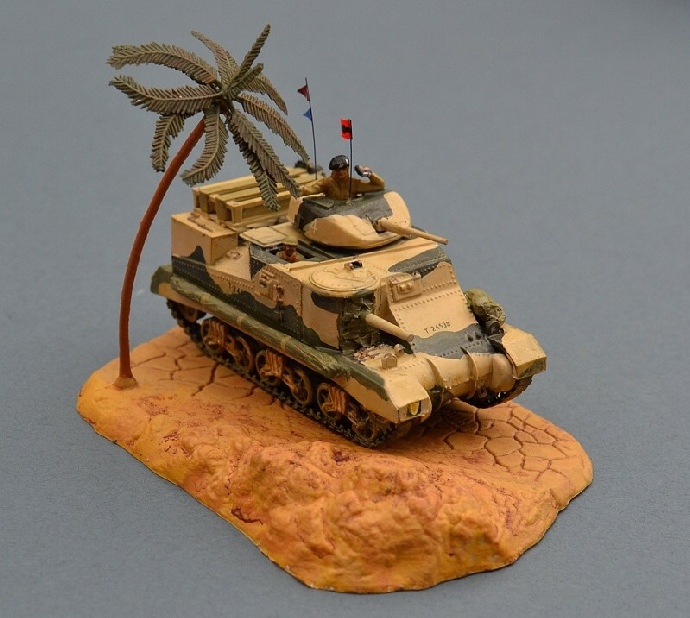
Centaur Mk. IV Tank, Royal Marines Armoured Support Group, Normandy D-
Armourfast 1/72 with Bison Decals and scratch 95mm barrel.
The A27 Cromwell/Centaur tank was one of the most successful British designs of WW2.
Developed from the Crusader and building on the experience of the Desert Campaign,
it possessed heavier armour and armament, along with high speed and mobility. Its
low profile and high speed made it particularly popular as a reconnaissance tank,
although its vertical sided armour proved less effective than the thinner sloped
armour of the Sheman tank. The name Centaur was given to the earliest A27 designs,
powered by WW1 era Nuffield Liberty aero-

Austin K2 Ambulance, Royal Army Service Corps, Tobruk-
Airfix 1/76 .
The Austin K2 Ambulance with Mann-
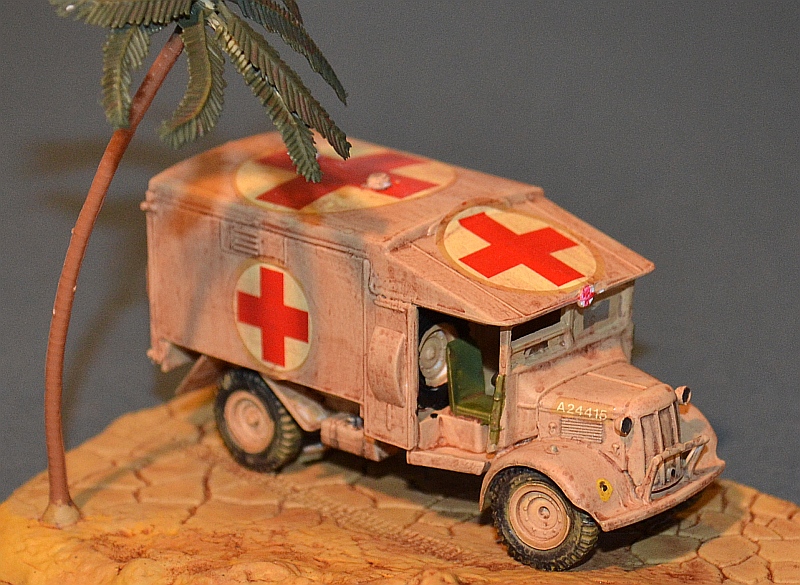
Sherman M4A2 MkIIITank, 2nd Lothians & Borders Horse Yeomanry, Tunisia May 1943
Armourfast 1/72.
As WW2 in North Africa drew to a close, Allied forces began to re-
Sherman tanks of the 2nd Lothians led the way in the crucial battle of Hamman-
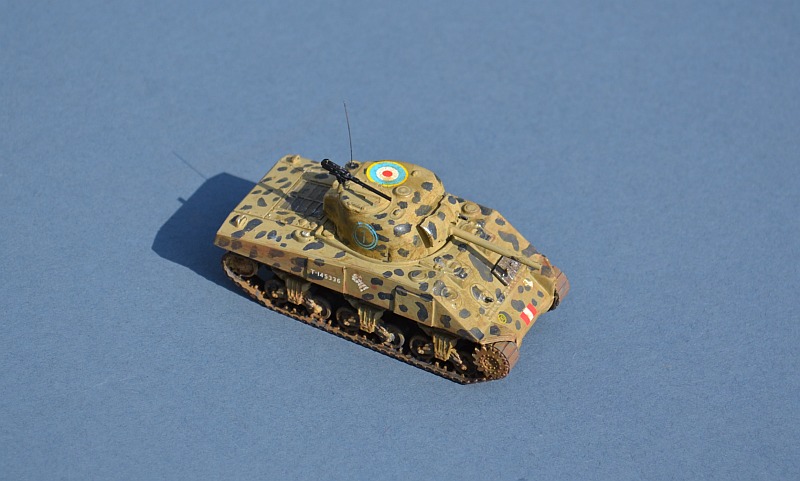
Sherman M4A2 MkIIITank, 2nd Lothians & Borders Horse Yeomanry, Italy June 1944
Armourfast 1/72.
After a period of occupation duty in Tunisia, the Lothians moved to Italy with the 8th Army. After playing apart in the Monte Cassino battles, the Lothains led the Allie dadvance up Highway 3 toward Kesselring's Gothic Line in Northern Italy.
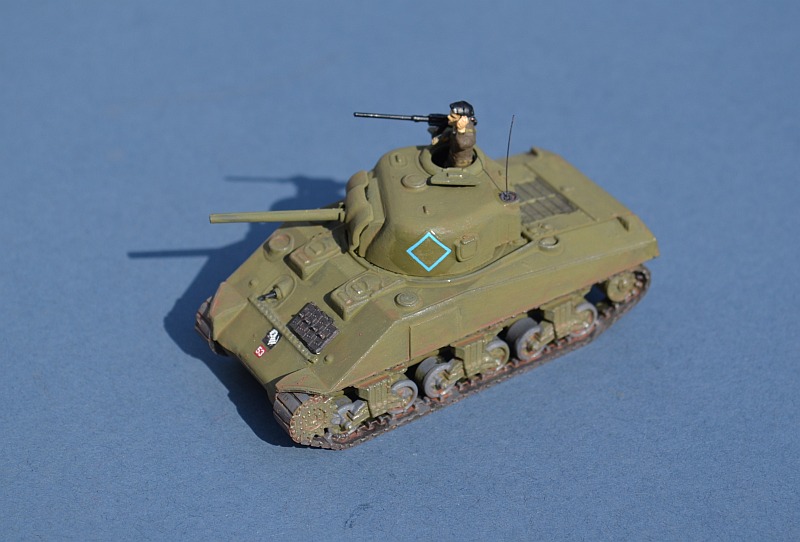
Airfix 1/76 .
Following on from the disaster of the Dieppe Landings, a range of specialist assault vehicles were developed by the Allies to lead the Crab flail tank, designed to clear the way through the beach wall defences.
Crabs of the 79th Armoured Division, known as “Hobart’s Funnies” after their leader
General Percy Hobart, were some of the first vehicles to be landed on the D-
Amongst these were the tanks of the reformed 1st Lothians & Borders Yeomanry.
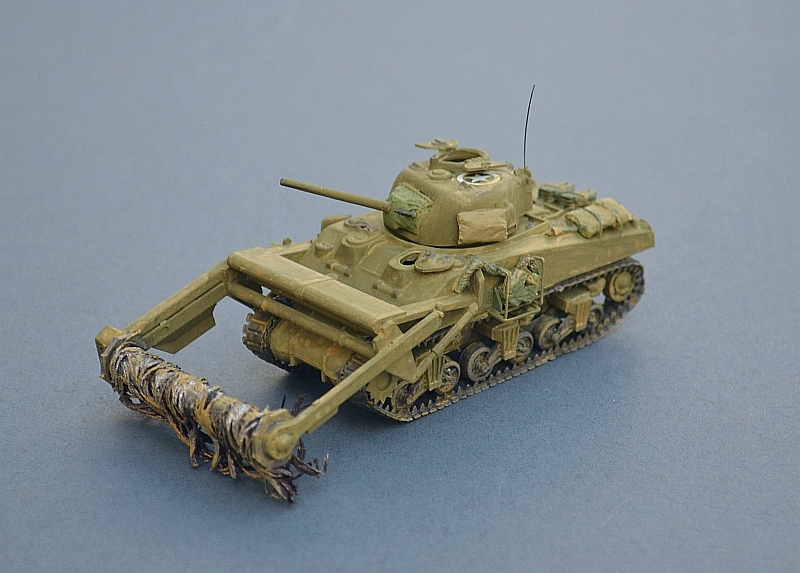
T-
Matchbox/Revell 1/76 .
The T-
Like most tanks of its time, in its original form it was underarmed and reliability was variable, but in combat it proved at least the equal of most German tanks, and best of all it was cheap, easy and quick to produce. In a very real sense, this is the weapon that won WW2 for the Allies.
In November 1942, the Red Army launched Operation Uranus. Taking advantage of the German's poor preparation for winter weather and targetting the weaker Axis units surrounding Stalingrad, by 22 November, the Soviets had encircled the 290,000 men of the German 6th Army and settled down to a winter war of attrition, as the Germans were gradually starved into surrender.
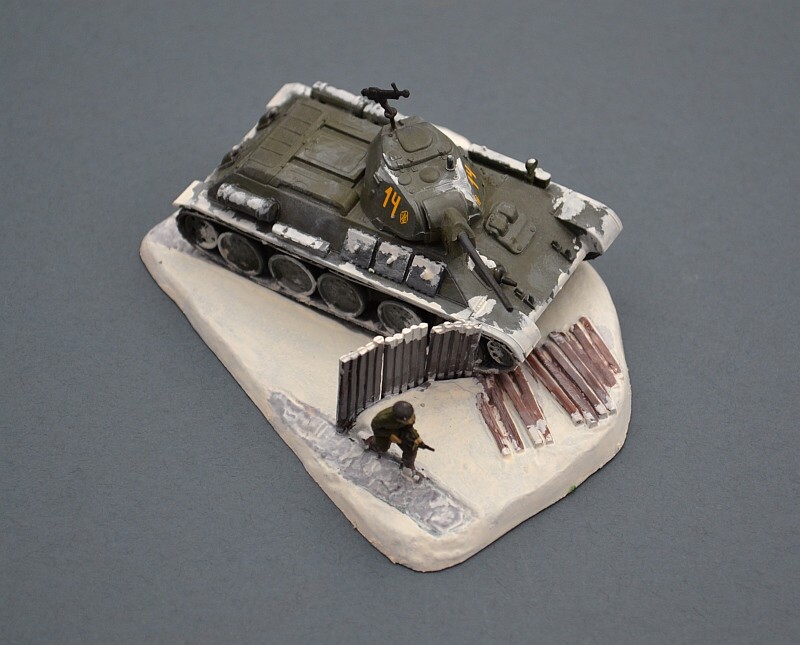
SdKfz 222 Armoured Car and VW Type 82 Kubelwagen
Airfix 1/76 HO-
"Leichter Panzerspähwagen" 2xx series Light Armoured Reconnaissance Vehicles were
a series of light four-
The VW Type 82 Kubelwagen was developed from the ubiquitous VW Beetle, designed by Ferdinand Porsche. Its name translates literally as "bucket truck", reflecting its utilitarian and rather basic construction.
Lightweight, reliable, cheap to build and remarkably good off-
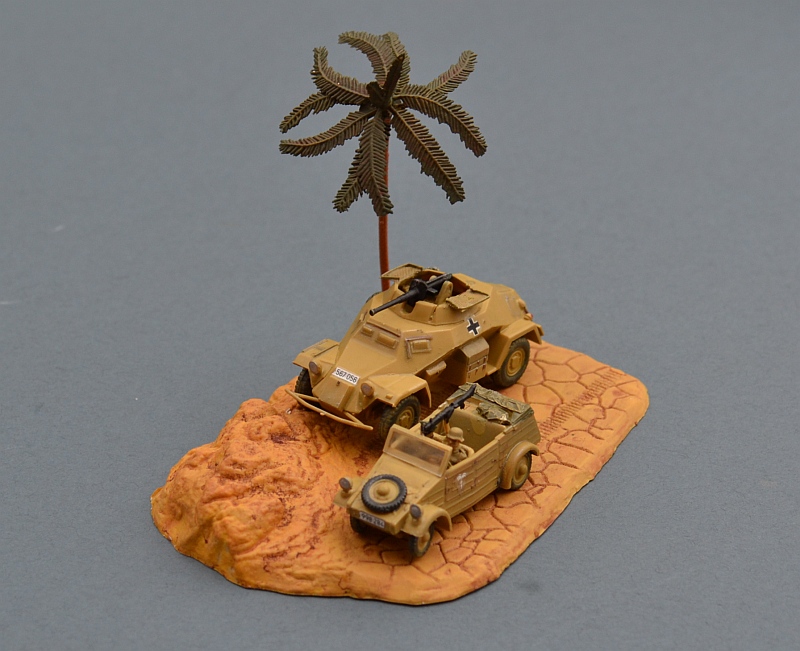
PzKpfw IV Panzer
Airfix 1/76 HO-
The Panzer IV was originally intended as a heavily armed support tank to be deployed in limited numbers alongside the lighter Panzer III. As the weight and power of tank guns increased, the IV chassis was seen to have greater development potential and became the main German tank. The Ausf F2 variant, carrying thicker armour and a new longer barrelled 75mm gun was supplied in limited numbers to Rommel's Afrika Korps in late 1942, where it proved superior to the British Crusader and Valentine tanks.
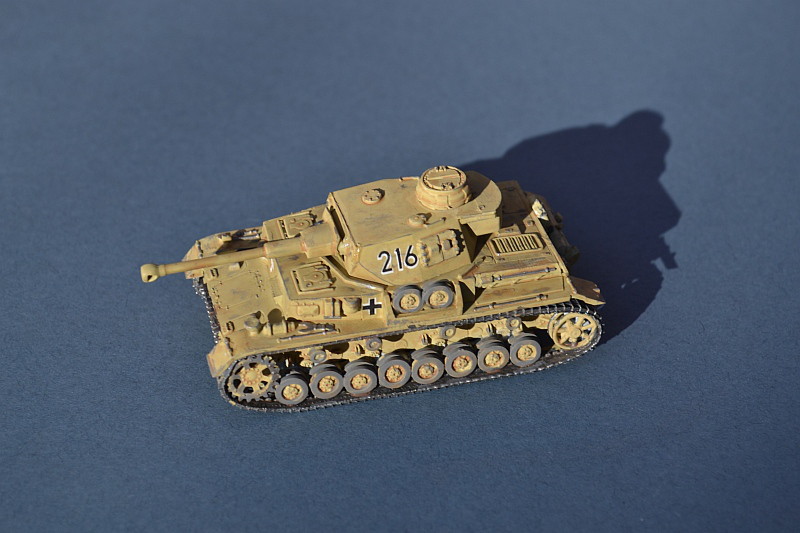
As part of the 6th Armoured Brigade's 26th Armoured Division, Crusader and Valentine tanks of the 2nd Lothians & Borders Horse Yeomanry, together with those of their sister unit the 17/21 Lancers, played a key role in the successful battle of Bou Arada in January 1943, where the Allies captured their first Tiger Tank, then in halting the German breakthrough at the infamous Kasserine Pass in February 1943.
As a result of the poor performance of both British tank types against the up-
Despite the introduction of the advanced Panzer V (Tiger) and Panzer VI (Panther) tanks, the Panzer IV was more reliable and easier to build, so remained in production as the mainstay of German tank forces right up until the end of WW2.
After the war, the type saw active service with Finland, Bulgaria and Romania right
up until the 1950s, with some seeing use as fixed border gun emplacements for much
longer. Panzer IVs last saw combat during the 1967 Arab-
37mm AA Gun M1938 61-
Zvezda 1/72 .
The 61-
Over 20,000 were built before production ended in 1945, with many more subsequently produced by the Chinese as the Type 55 gun. Many of these weapons remain in use around the world today, although their effectiveness against modern aircraft and weapons is very doubtful.
Soviet 37 mm 61-
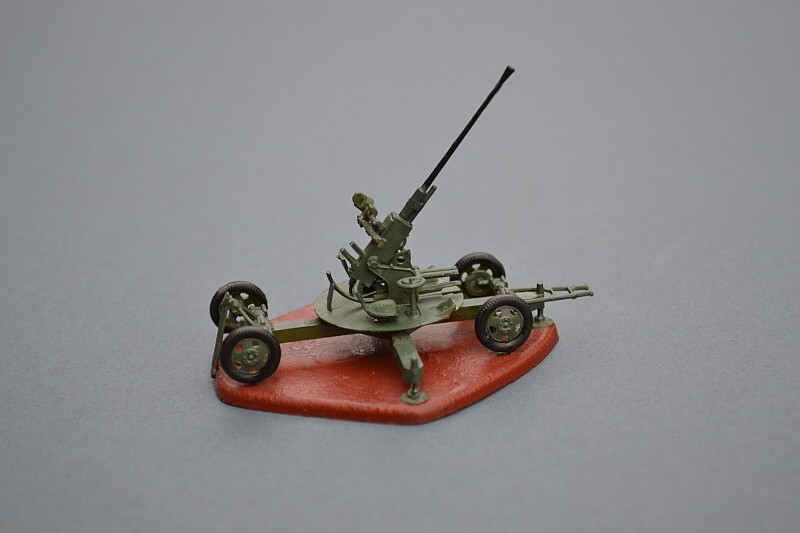
www.gengriz.co.uk
Armourfast 1/72 with spare Decals
The A27 Cromwell/Centaur tank was one of the most successful British designs of WW2. Developed from the Crusader and building on the experience of the Desert Campaign, it possessed heavier armour and armament, along with high speed and mobility. Its low profile and high speed made it particularly popular as a reconnaissance tank, although its vertical sided armour proved less effective than the thinner sloped armour of the Sheman tank.
The name Centaur was given to the earliest A27 designs, powered by WW1 era Nuffield
Liberty aero-
